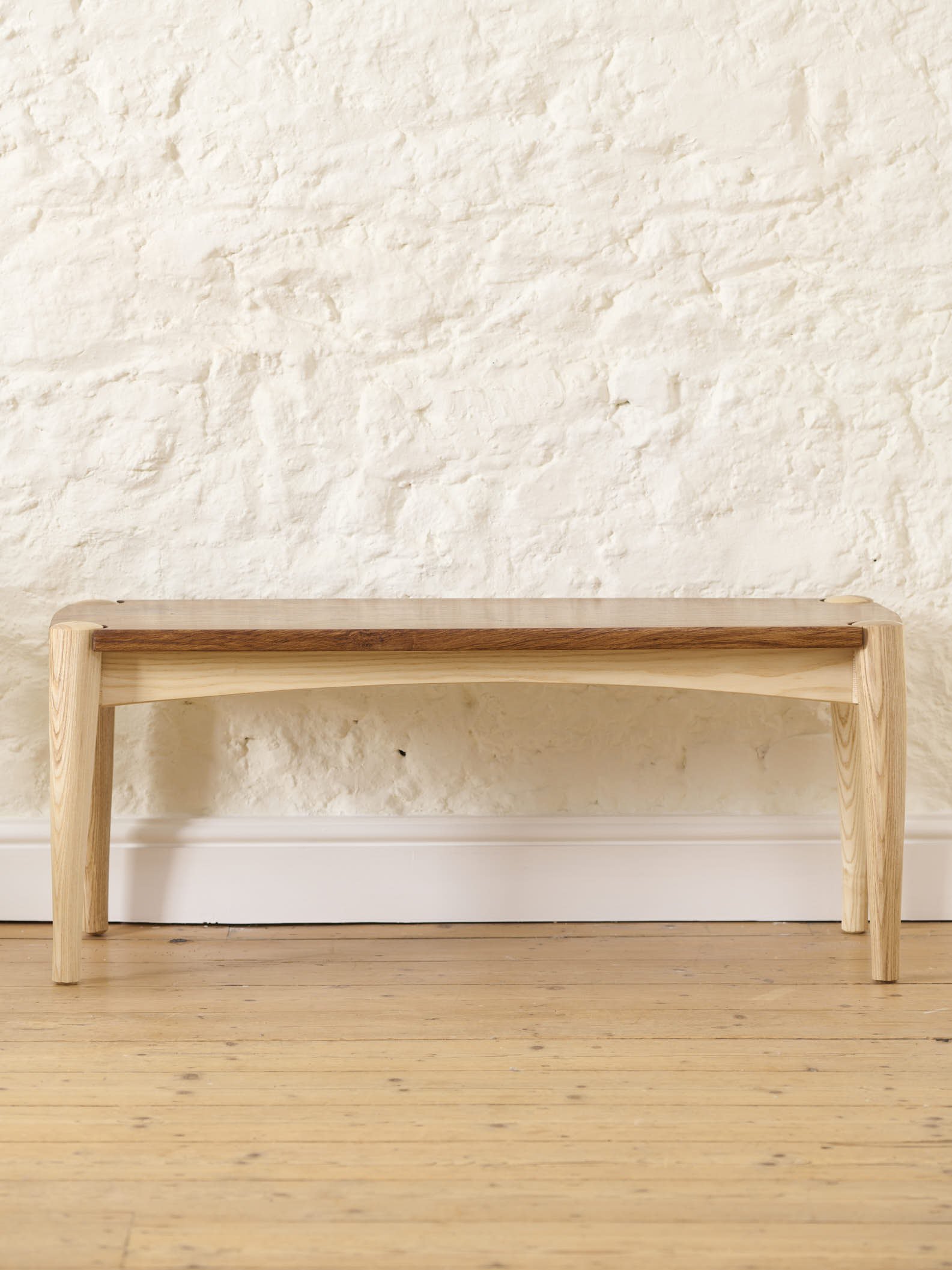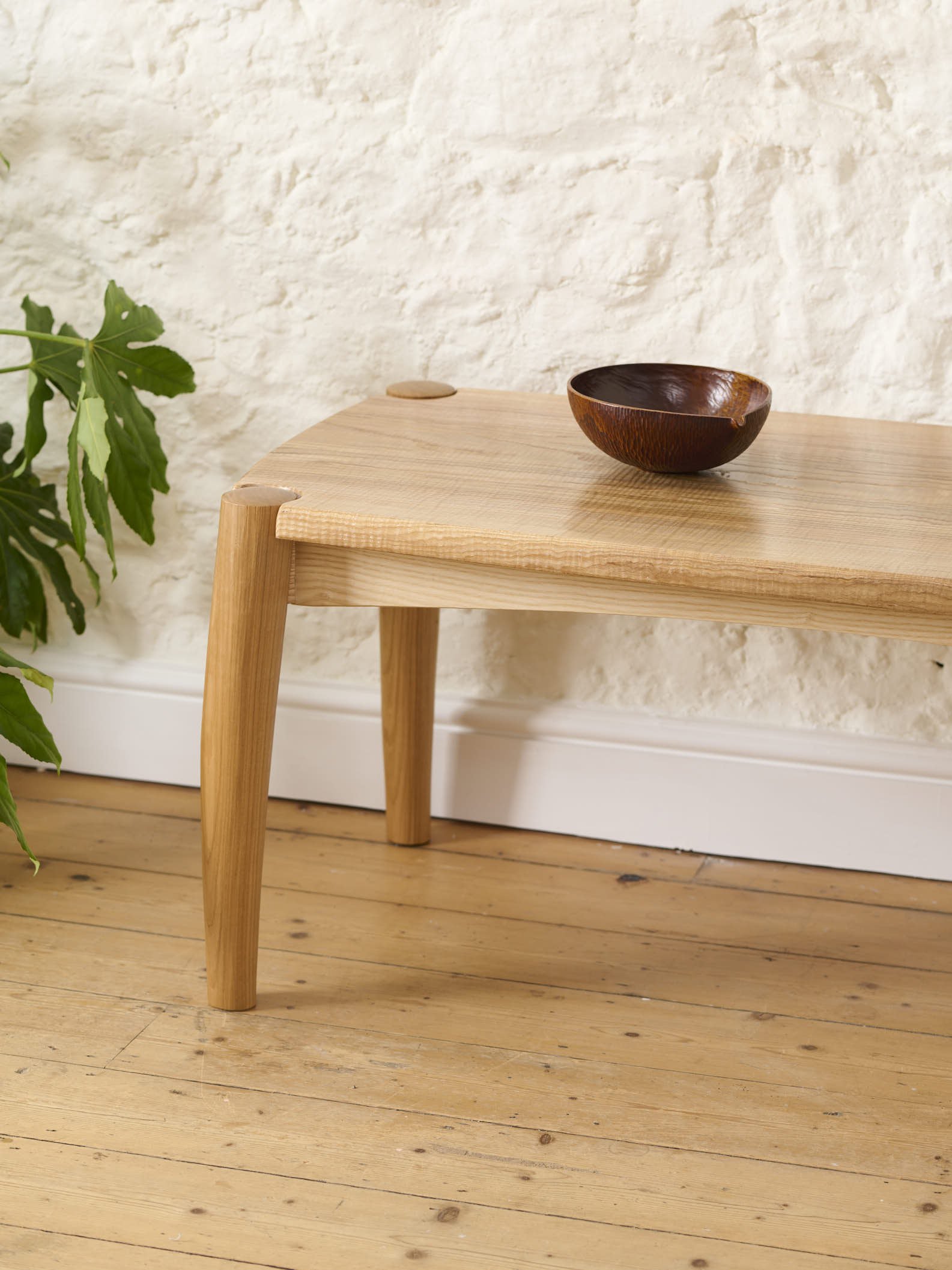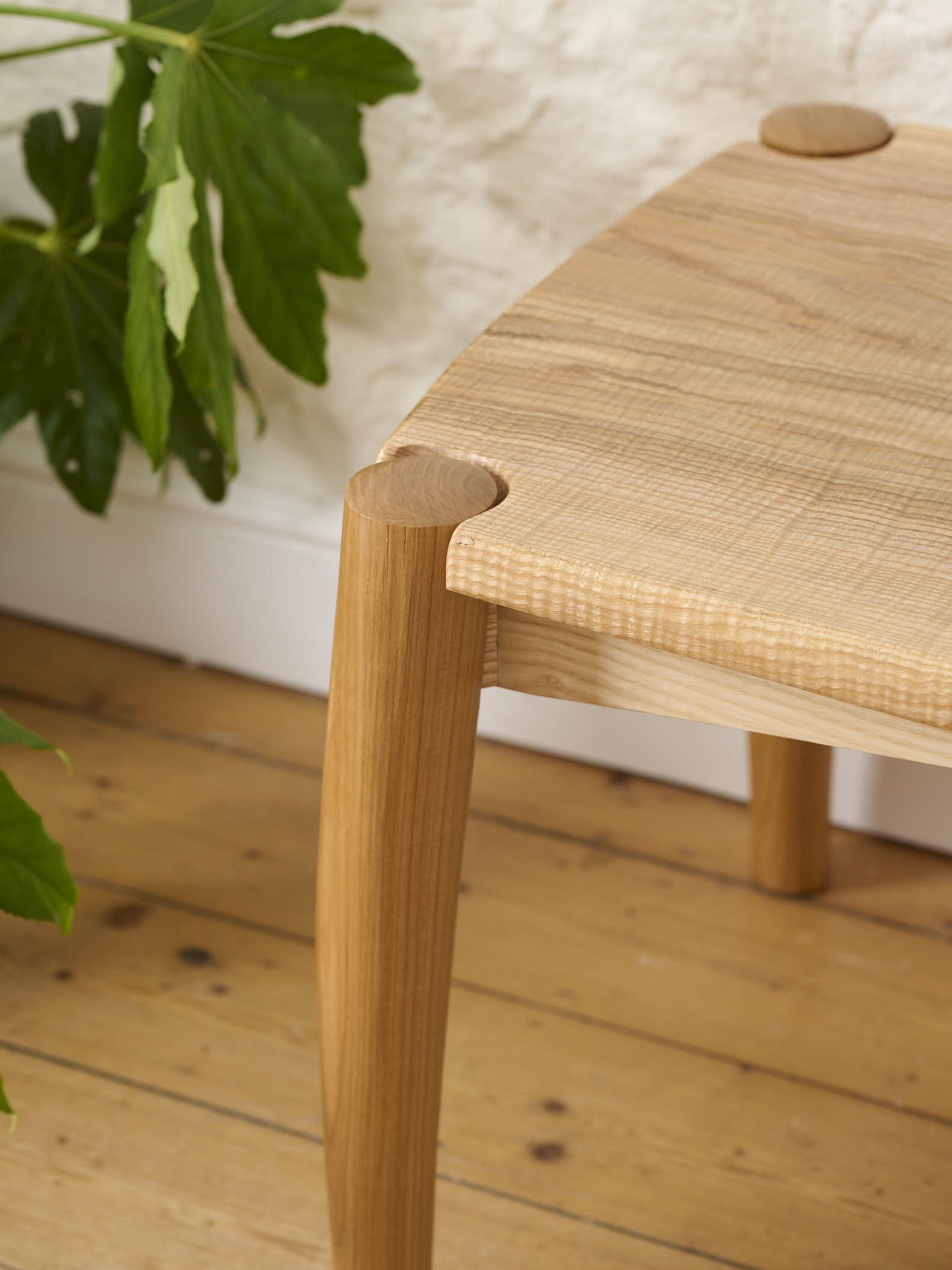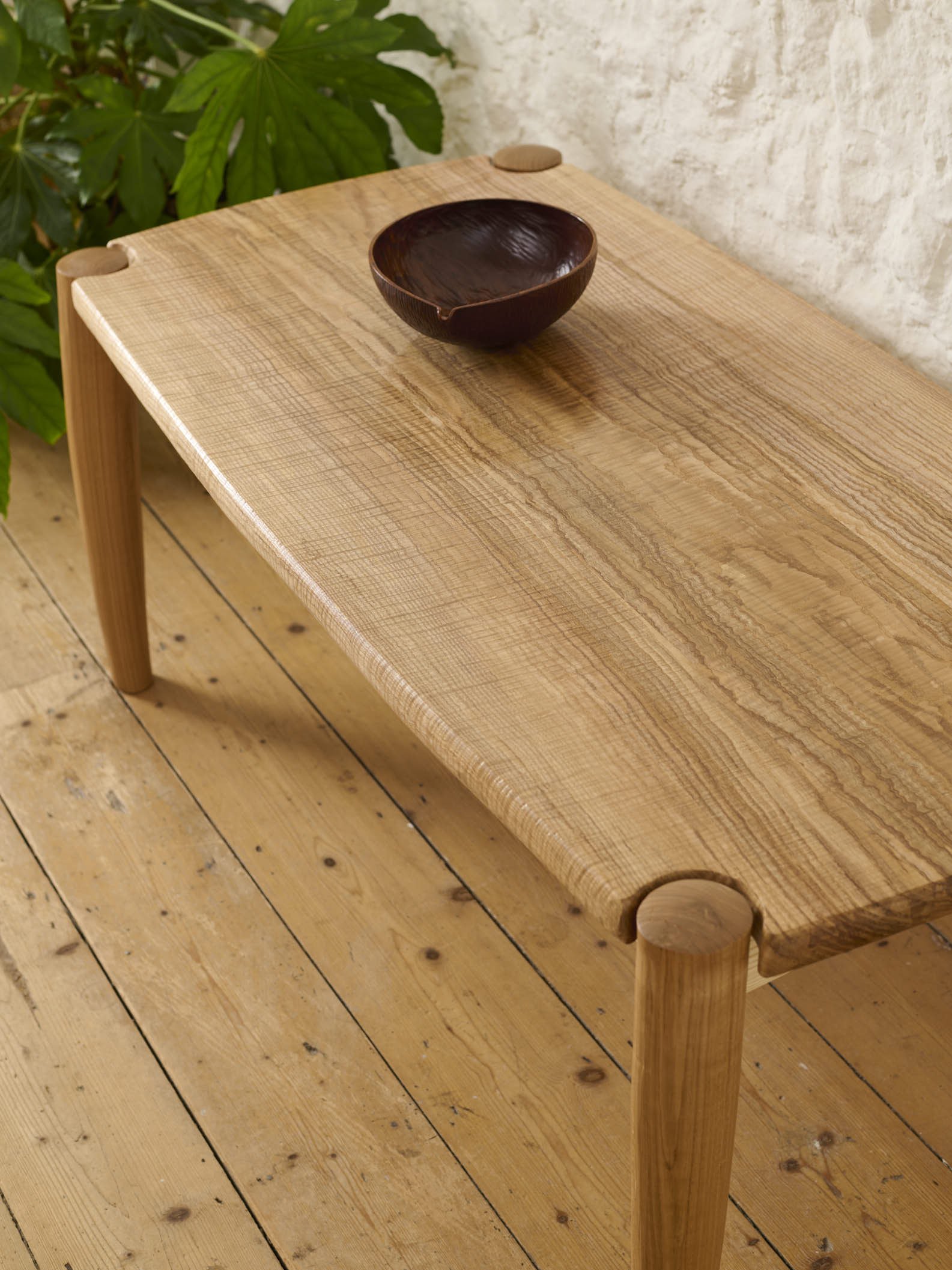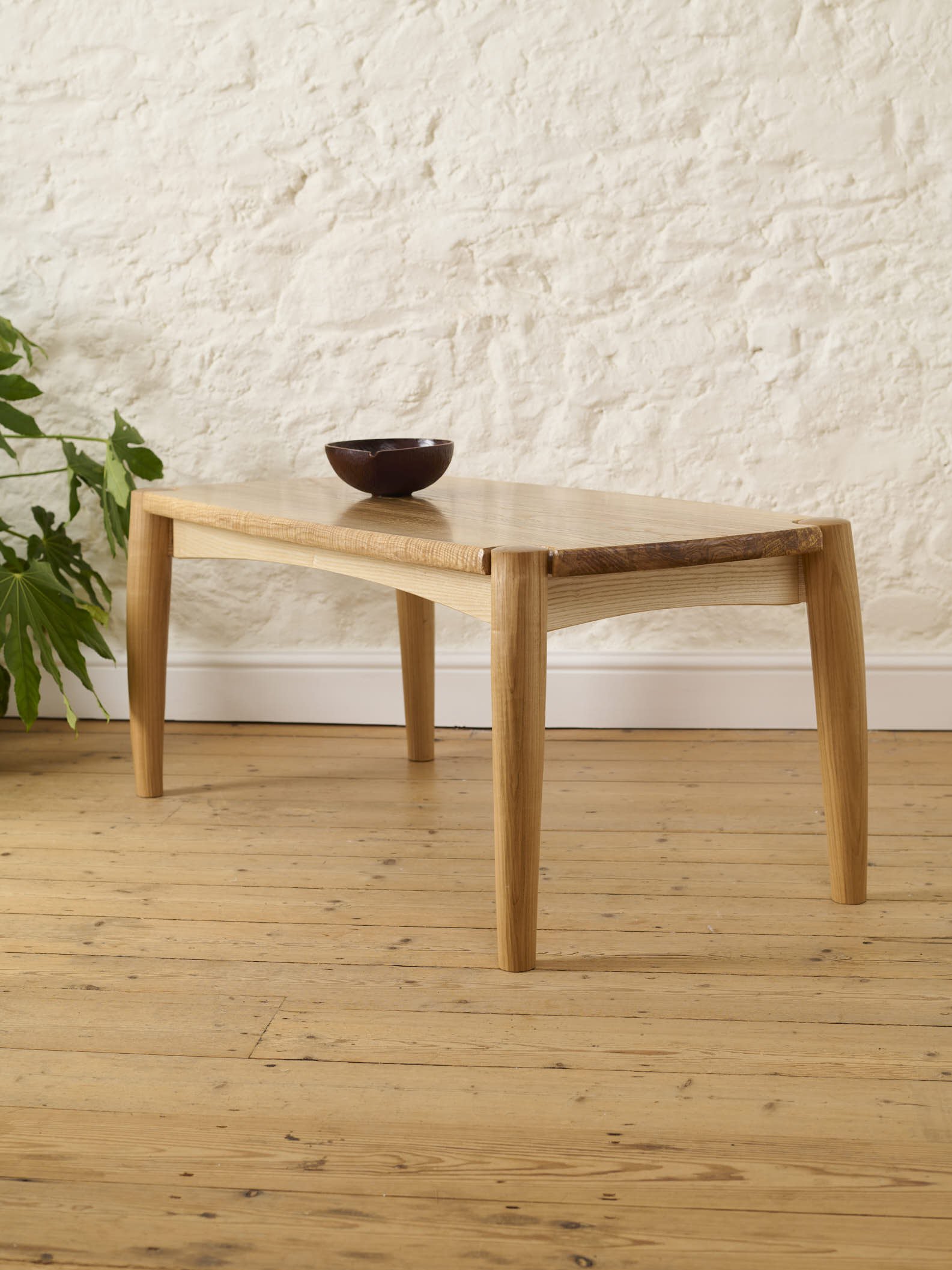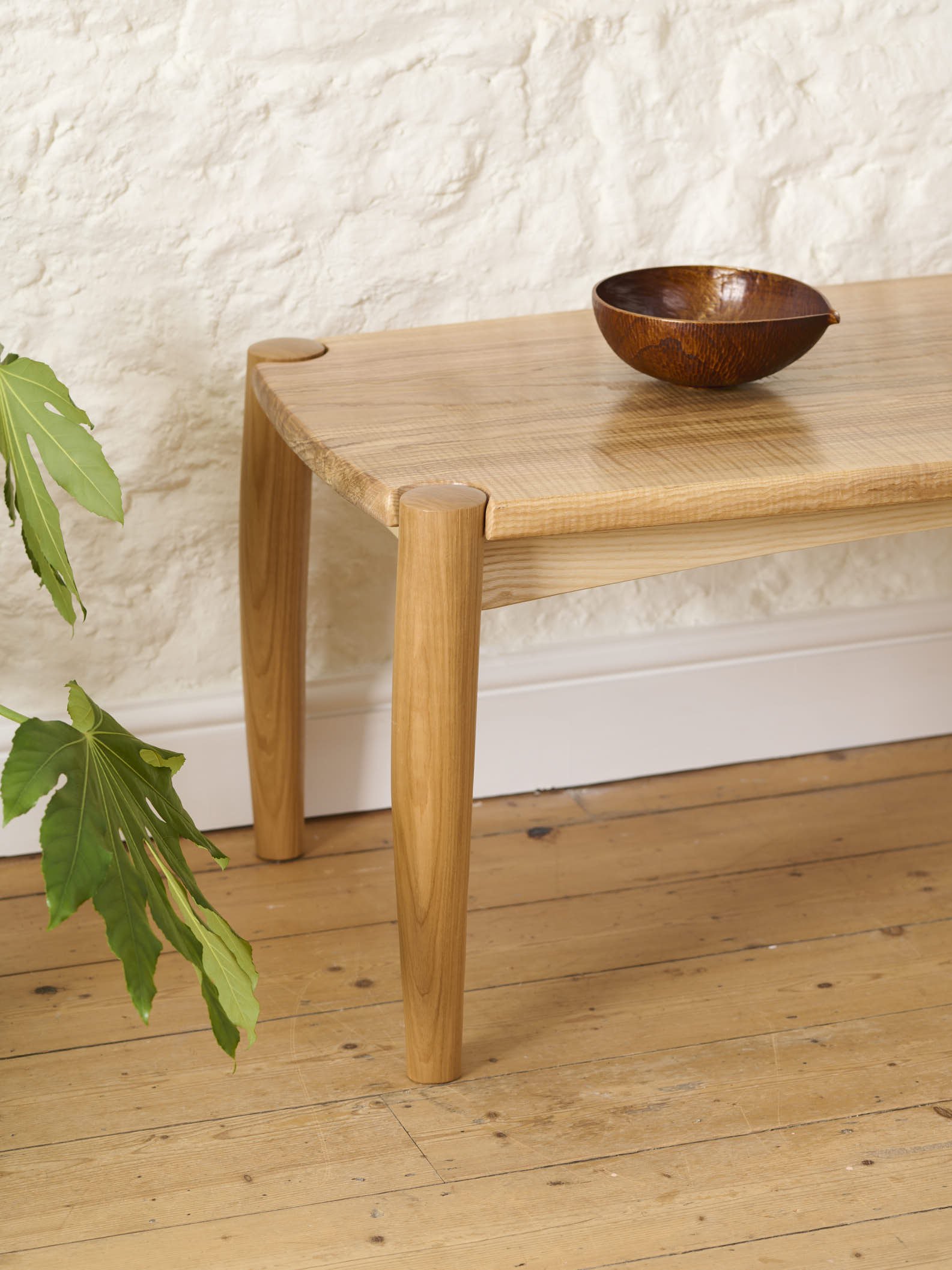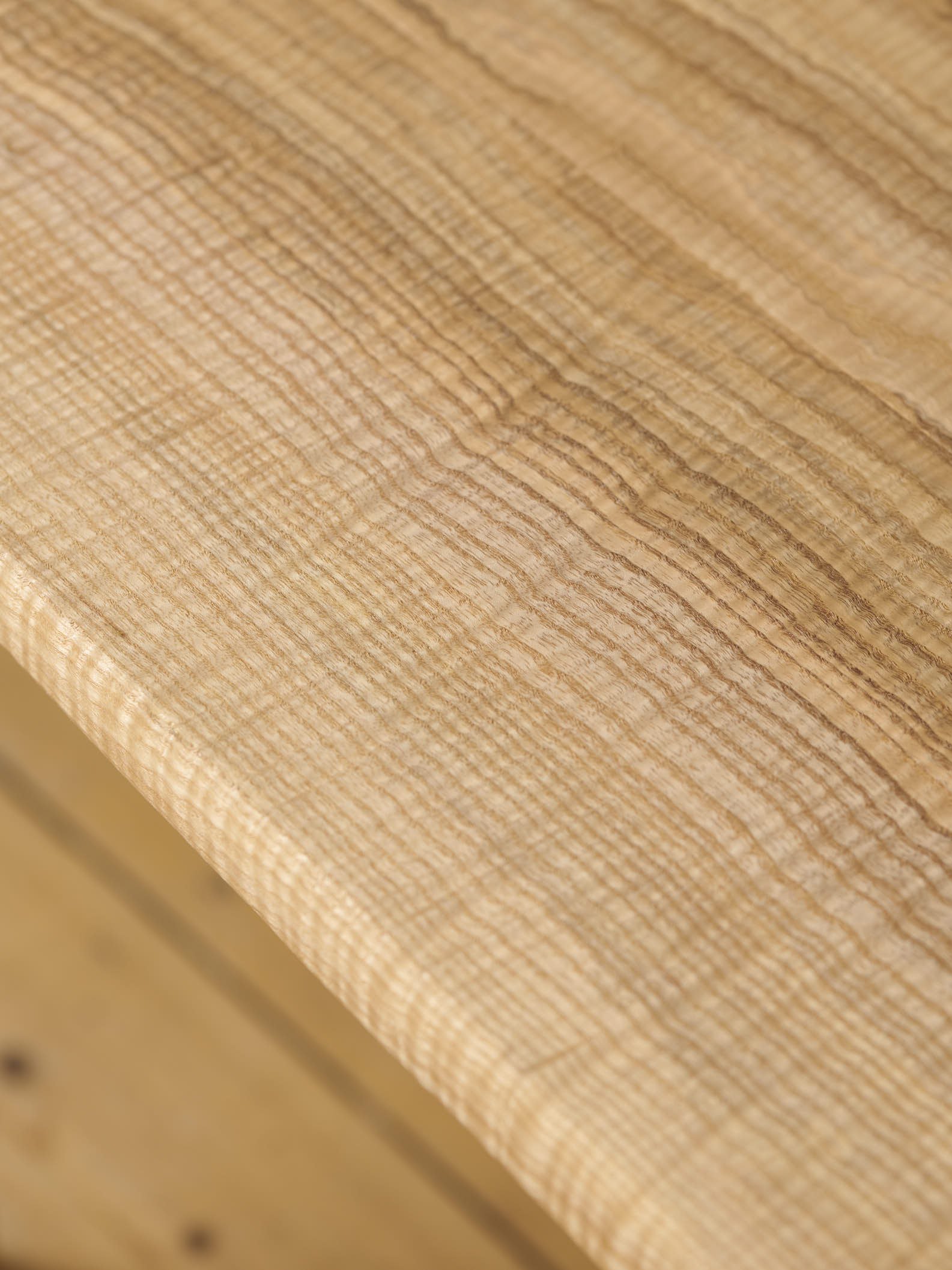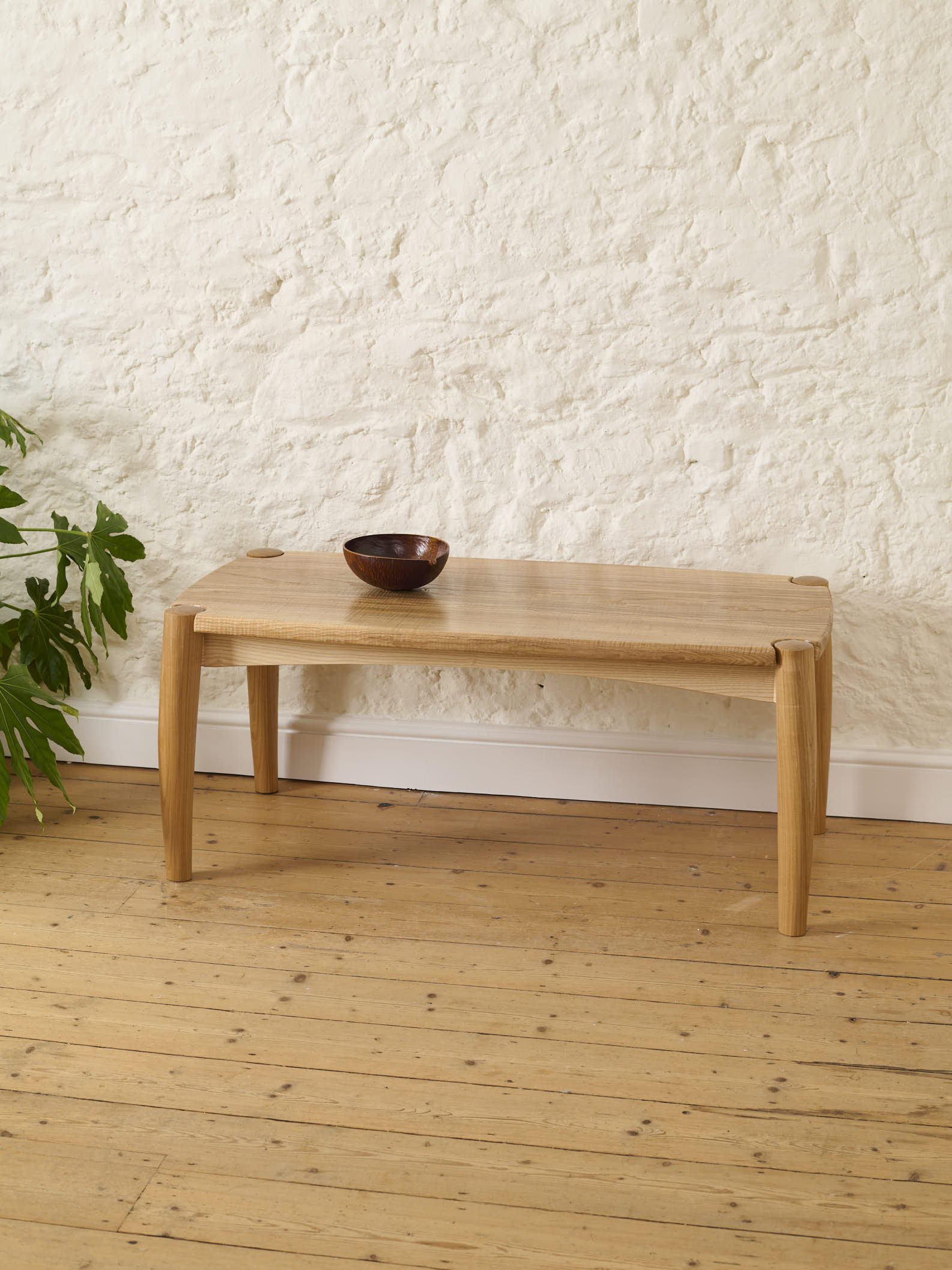Rippled Ash Table Commission
Ripples often occur in timber where it is under compression, for example under a heavy bough, but some trees exhibit rippling throughout most of their trunk. This more uniform rippling is caused by a genetic mutation, which effects the production of the growth-promoting auxin (similar to our hormones). The mutation causes the timber to grow in a particular direction as opposed to straight up towards the light. The auxin recognises this and in a kind of overactive auto-immune reaction dictates that the growth route should change, which it does, going in the opposite direction. This continuous back-and-forth, wave-like growth causes a rippling refraction of light when the timber is polished. This effect of depth on a flat surface is called chatoyance. Either way, it is stunning! Other timbers you may find ripples in include maple and sycamore, and very occasionally walnut or oak. We currently have a spectacular piece of rippled oak at the workshop waiting for the right commission.
The customers for this project had both been on my Chair Making Course, and had fallen in love with my work after seeing it at the South West Contemporary Craft Fair many years previously. As they live quite locally I invited them to visit the workshop to discuss what they were after, and to show them the boards I had in stock.
They chose this stunning piece of rippled ash, with lovely olive colouring in it, that I had bought from Anton Coaker on Dartmooor, during a trip there with participants on my Table Making Course. I paired it with wild English cherry legs which had been split and shaved a couple of years earlier. I love the combination of the two colours.
Rippled ash, showing the wonderful 3D effect, or chatoyance when polished.
We have a great selection of stunning timbers in stock - give me a call to organise a workshop visit or arrange a zoom call to see if we have something beautiful for your own furniture commission.


